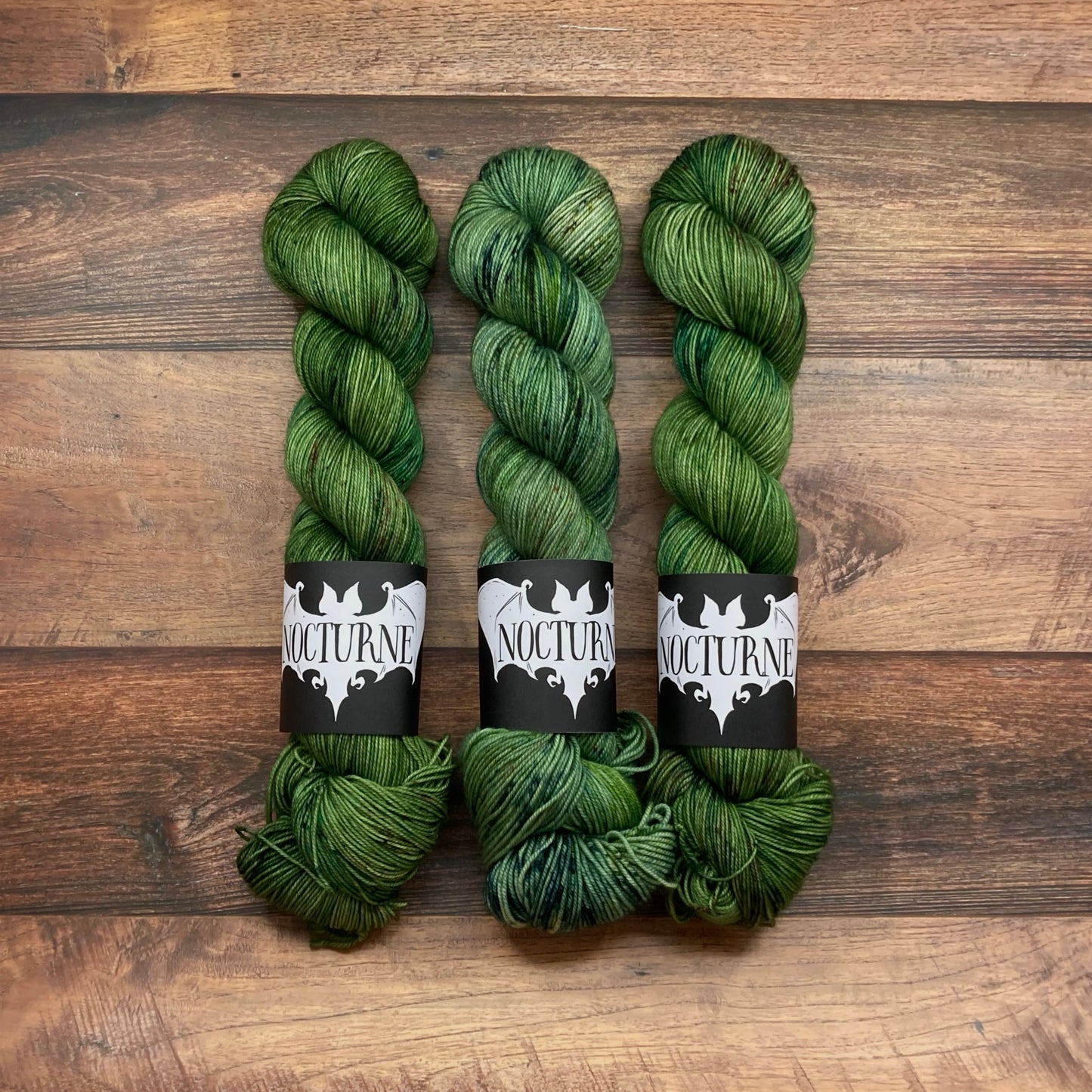Nocturne
Dryad - Mokosh
Dryad - Mokosh
Low stock: 1 left
- Need more? Click here for Custom Orders!
Couldn't load pickup availability
Dryad is a variegated colourway with tones of light and dark green, green and subtle warm brown speckles. I adore nature spirits across many folklores, and I couldn’t possibly leave the dryads out! 🌿
Dryad is a repeatable colourway and also available in other yarn bases ✨
While nowadays we use the term dryad more broadly to mean tree spirits or tree nymphs, a Dryad (Greek: Δρυάς) is an oak tree nymph or oak tree spirit in Greek mythology 🌿
Distinct from other Greek goddesses, nymphs are generally regarded as personifications of nature; they are typically tied to a specific place, landform, or tree, and are usually depicted as maidens. They were often seen as having healing properties; other divine powers of the nymphs included divination and shapeshifting. They are often attendants of goddesses and frequently occur in myths with a love motif, being the lovers of heroes and other deities✨
Nymphs often tended to frequent areas distant from humans but could be encountered by lone travelers outside the village, where their music might be heard, and the traveler could spy on their dancing or bathing in a stream or pool, either during the noon heat or in the middle of the night. These encounters could be dangerous, bringing dumbness, besotted infatuation, madness or stroke to the unfortunate traveler.
Mokosh Fingering
Fiber contents: 100% Superwash Merino (19,5 Microns)
Weight per skein: 100 g / 3,5 oz
Running length Fingering: 400 m / 437 yds
Yarn Weights Available: Fingering & DK
✓ Oeko-Tex 100 Certified Yarn Base
Mokosh is a super soft yarn with a natural shine. Creates a beautiful fabric and is fantastic for the lovers of a gentle tactile experience without compromising the fibre strength and washability. Mokosh makes cozy, comfortable sweaters, shawls and accessories.
Mokosh is named after an ancient Slavic goddess Mokosh, Mokush or Mokosha. The veneration of Mokosha as the protector of sheep and spinning wheels was maintained in northern Russian and Ukrainian folklore until the mid-19th century. She had a large head and long arms, and would go around cottages and spinning wheels at night if the tow was left freely accessible. Although traces of her cult were recorded in the middle of the 19th century in northern Russia, the figure and position of this goddess in the Slavic pantheon have not been satisfactorily explained to this day. She however appears prominently as the protector of women's work, especially spinning and sheep shearing.
Share

Collapsible content
Essential Information for buying our Hand-Dyed Yarns
When purchasing hand-dyed yarn, we recommend buying enough for your entire project.
Our yarn is handmade in small batches. While we follow precise recipes for repeatable colorways and carefully measure our materials, slight variations between skeins are inevitable. No two skeins will ever be identical, as is the nature of handcrafted products.
We take new photos for each dye lot, so images on our website may differ from skeins you’ve purchased in previous batches.
For a more uniform appearance in knitting, crochet, or weaving, alternate skeins every few rows.
We ensure all dyes are fully exhausted before rinsing our yarn. However, mild color bleeding can still occur, especially with bright, dark, or speckled skeins. To prevent unexpected color transfer, rinse your skein in cold water with wool wash and let it dry before starting your project.
For detailed care instructions, please follow this link.
This listing is for one (1) skein of yarn unless stated otherwise. Photos of multiple skeins are for comparison purposes, showcasing differences between yarn bases and/or skeins.
Please note that colorways may appear slightly different due to display settings on your device. Especially keep this in mind if you are using apple devices, which are known to alter colours. While we optimize our photography for color accuracy, viewing images on a monitor provides the most reliable representation.
